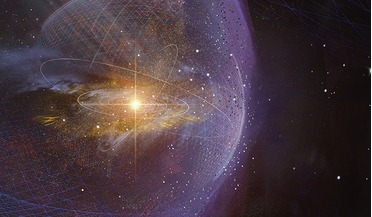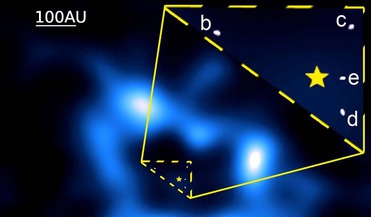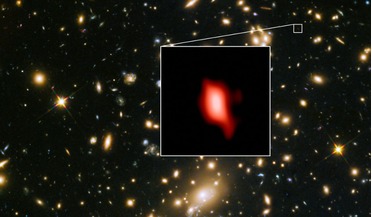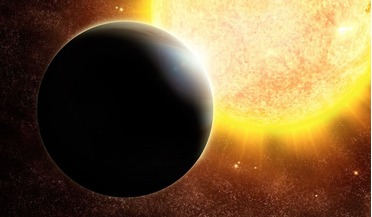 March 2021
Messier 82’s starburst magnetic highway
March 2021
Messier 82’s starburst magnetic highway
... lines in Messier 82 overlaid on visible-and-infrared composite images (across the bottom) from the Hubble Space Telescope and the Spitzer Space Telescope. The galactic superwind from the central starburst is blasting out plumes of hot gas (red) and...
 30 November 2015
“Alien Megastructure” Star's Dimming was Possibly Caused by Comets
30 November 2015
“Alien Megastructure” Star's Dimming was Possibly Caused by Comets
... to take a closer look at the mysterious star. They studied observations made in January 2015 by NASA's Spitzer Space Telescope, which is optimized for observation in infrared wavelengths. Simply put, when dust warms up, it emits infrared light...
 January 2022
Revealing the magnetic universe
January 2022
Revealing the magnetic universe
.... Magnetic fields lines in Messier 82 overlaid on a visible and infrared composite image from the Hubble Space Telescope and the Spitzer Space Telescope. The galactic superwind from the central starburst is blasting out plumes of hot gas (red) and...
 18 May 2016
Multi-planet system hints at extra planet in its cometary belt
18 May 2016
Multi-planet system hints at extra planet in its cometary belt
... geometry made from previous observations taken with the Spitzer Space Telescope imply that the disc consists of an inner ... zoom-in portion of the image, taken with ESO's Very Large Telescope, shows the location of the known planets in this system in ...
 16 May 2018
Astronomers find stars forming just 250 million years after Big Bang
16 May 2018
Astronomers find stars forming just 250 million years after Big Bang
...Japan, reconstructed the earlier history of MACS1149-JD1 using infrared data taken with the Hubble Space telescope and NASA's Spitzer Space Telescope. After modelling the data, Hashimoto and colleagues found that the observed brightness of the galaxy...
 February 2016
How to Build Planets
February 2016
How to Build Planets
... excesses can be an indication of something different altogether. Artist’s impression of a ‘Hot Jupiter’ Observations with the Spitzer Space Telescope of discs lacking these two excesses indicate that the fledgling protostar is on its way to becoming...